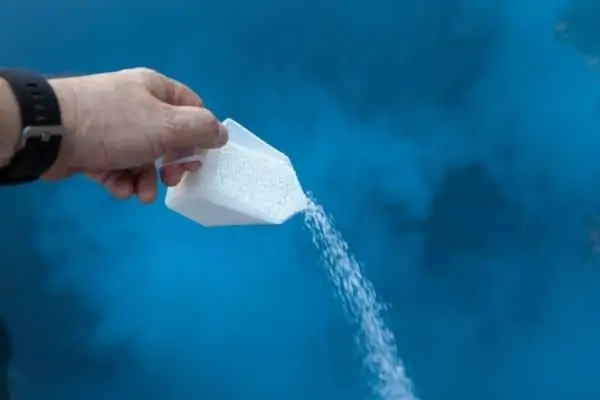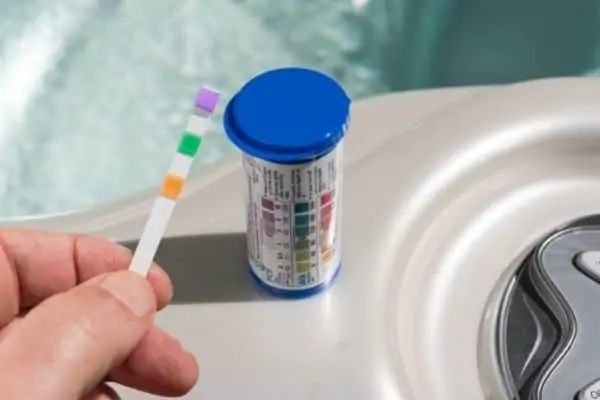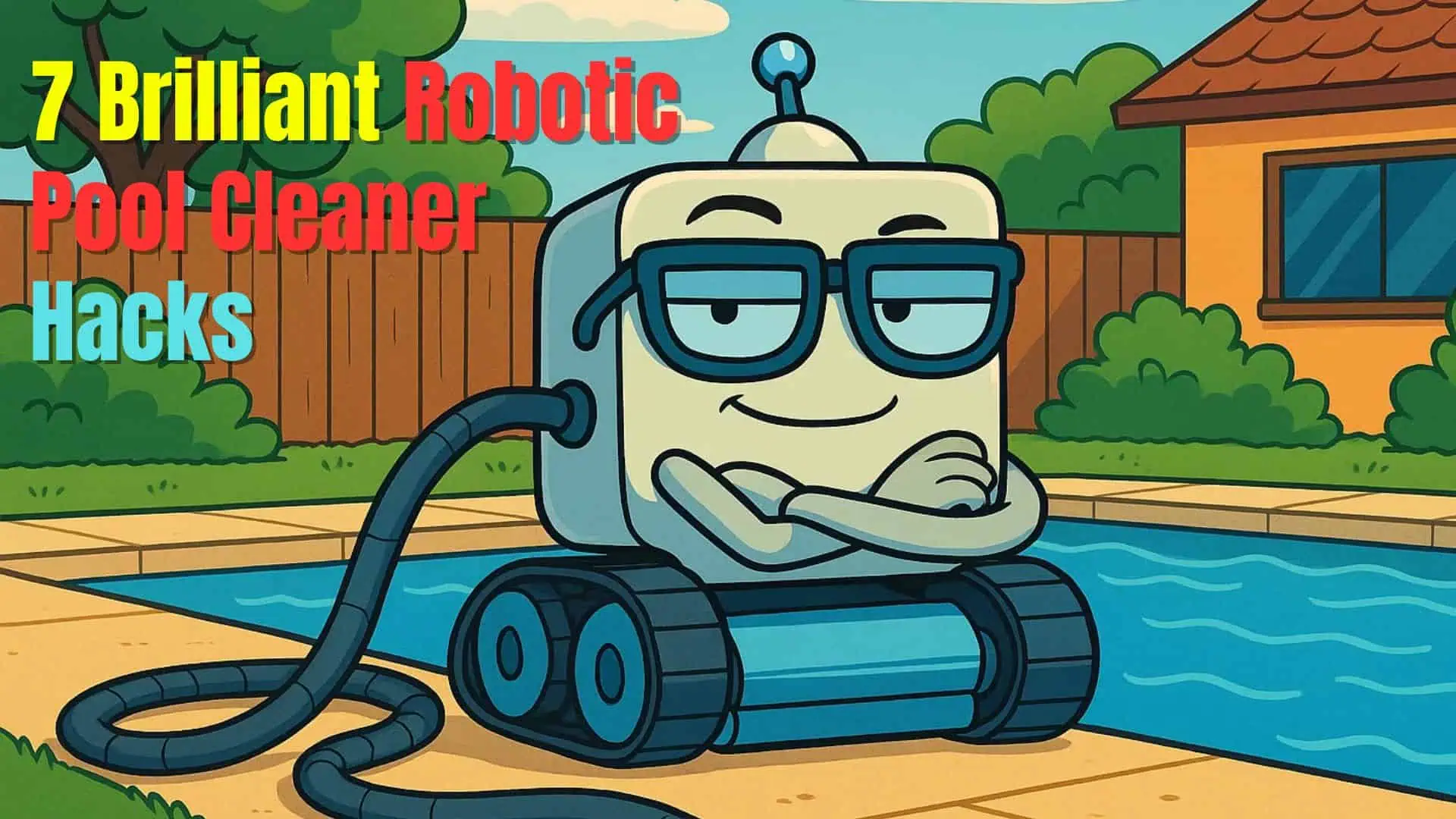Chlorine is essential to a healthy and safe hot tub experience, but it can be dangerous if not used correctly. Will high chlorine in the hot tub damage it?
Consistently having too much chlorine in a hot tub can damage it by corroding pipes, eating away at acrylics, such as the filter, and causing health problems.
Unlike a swimming pool, hot tubs have a relatively small volume of water, so it is easy to overdo the chlorine level if you are not careful. Knowing the amount of chlorine to keep the hot tub clean and what issues it may cause if you use too much is crucial to having a safe hot tub.

So, how much chlorine is too much? What are the effects of chlorine levels that are too high? And how can we adjust the chlorine level if it’s too high? Continue reading as we take a deep dive into the effects of chlorine on you and your hot tub and what to do if you make a mistake.
That being said, there is more to the picture. We’ll discuss the specifics of how chlorine can damage your hot tub, what health issues it could cause, how much chlorine to use, and other extremely important knowledge, so keep reading.
Too much chlorine in hot tub side effects
Many hot tub owners don’t bother to pay any attention to the amount of chlorine they are putting into their hot tubs, but that’s a big mistake, as too much sanitizer can lead to problems.
While chlorine is a regularly used chemical and is safe in small amounts, it must be used properly. Too much chlorine could cause issues for both you and your hot tub.
The effects of high chlorine in hot tub water can cause multiple issues with your hot tub, costing you quite a bit of money in repairs:
- Too much chlorine may throw off the water’s pH levels, creating a high level of acidity and corroding any metal pipes carrying water to the unit.
- High acidity levels can also eat away at hot tub surfaces, filters, and pillows. Spotting the damage is easy; darker surfaces will become bleached and soft surfaces will harden and become brittle.
Thankfully, if you realize your mistake soon enough and fix it, the likelihood that your tub will sustain any actual damage is low. Most issues occur when the chlorine level in the hot tub is consistently high.
You should not panic, though, if your hot tub water chlorine levels are normally correct and then suddenly you find they are high, perhaps because you added too much chlorine in one go. If the chlorine levels are consistently high, damage will occur to your hot tub over time. If it is just an unusual situation that lasts just a few days, then don’t worry about it.
Is it safe to go in a hot tub with high chlorine?
Is high chlorine in a hot tub dangerous? It can be, so it’s important to make sure you aren’t using too much chlorine for your own health or that of your family.
If you exceed the safe limit of chlorine (2-4 parts per million), do not get in until you are sure the levels have gone down. There can be severe side effects that you wouldn’t want to take a chance with.
High chlorine in hot tub side effects:
- Asthma attack
- Lung Irritation
- Skin Irritation
- Eye Irritation
- Hot tub rash (see CDC’s advice on hot tub rash)
In rare cases, too much chlorine in hot tub symptoms could be:
- Vomiting
- Throat Irritation or burning
- Dizziness
- Shallow breathing
- Coughing
- Even chest pains
So, if you are experiencing any irritation of the eyes, skin, or lungs, you need to hop out and check the chlorine levels immediately.
How much chlorine is too much?
To determine how much chlorine you should use, you must measure it by parts per million. You’ll need to pick up a reliable test kit to get this measurement.
When testing your chlorine levels, you should see between 1.5 and 3ppm and the water in the tubes should be clear. The amount of chlorine additive you need will change based on the manufacturer, and you should always check the manufacturer’s guidelines before adding chlorine to your hot tub.
On average, you’ll need to add a teaspoon of chlorine per every hundred gallons. Make sure that you add your chlorine to the hot tub while it’s circulating to help raise the chlorine levels quickly. That will ensure your readings are more accurate and you don’t overdo the chlorine.
How to lower chlorine in hot tub
If you have an over-chlorinated hot tub, it’s not the end of the world. There are a few ways that you can correct this easily:
- You can let the hot tub deal with the issue on its own. If you aren’t planning on hopping right in, just let it sit for a day or two and come check levels. You can speed up the process by turning on the jets and removing the cover. It isn’t the fastest way but the easiest and cheapest solution. Just be careful not to continuously overdo it because that is when you’ll start seeing damage to the hot tub.
- Another good option might be just to drain the hot tub and fill it with fresh water. This method is still a little time-consuming but doesn’t require anything extra. You may just be able to do a partial drain and top up with fresh water.
- If you need a quick fix, find a chemical chlorine neutralizer to bring the chlorine levels in your hot tub water down to where you need them. The chlorine neutralizer you need is called Sodium Thiosulfate. While this may be the fastest way to knock the chemical levels down, it isn’t the best, and you should only use it if you have to bring down the chlorine quickly, perhaps if you have friends coming around to use it.
These three solutions should get you back on track with no issues. Ensure that you have the time to let the hot tub deal with itself and that it doesn’t happen consistently.

How often should you maintain your hot tub?
It’s not a bad idea to get into a routine with your hot tub maintenance so that you can always have just the right amount of chlorine in your hot tub.
To keep it at the proper levels, it’s not a bad idea to add chlorine every two or three days, if that is what the water test suggests (ie. chlorine levels are low). You should also perform weekly maintenance on it to make sure you don’t have any damage occurring. This should include:
- Clean your filter and remove any debris that might have accumulated.
- Check your pH and alkaline levels, ensuring they are between 7.2 and 7.6.
- Check your chlorine levels; you should know where they are if you’ve been keeping up with them.
- Use hot tub shock regularly.
Recommended Test Strips
You can also prevent damage by changing the water every few months, filling the tank with fresh water, and soaking the filter. Wear and tear will happen, but if you take these few precautions, you can minimize and catch issues before they turn into real problems.
Hot Tub Maintenance Course
I bought Swim University’s Hot Tub Maintenance Course a while after I bought my first hot tub and struggled to maintain it. It was very well spent and has paid for itself many times over the years as I have saved by not needing to use as many chemicals as I did previously.
Listen to our Hot Tub Course Review Podcast:
Conclusion
If you accidentally overdo your chlorine, don’t worry too much. It will go down with time, and you’ll only need to worry about whether excess chlorine damages a hot tub if you make that mistake regularly.
If you need a quicker solution, drain the tub and refill it with fresh water, or purchase a product to neutralize chlorine.
Here are a couple of things to do that will help you minimize damage to your hot tub from chlorine:
- Get a good test kit and test the water every two or three days.
- Don’t allow your chlorine levels to go over 3 ppm.
- Ensure that you are doing regular maintenance on your hot tub (that includes checking any pipes susceptible to corrosion).
- Create a schedule and stick to it!
It is very important to monitor your chlorine levels. If they start to exceed acceptable levels, fix them as soon as possible to avoid further damage to your hot tub.
Also read my article Can Too Much Chlorine in Hot Tub Damage it?







Leave a Reply